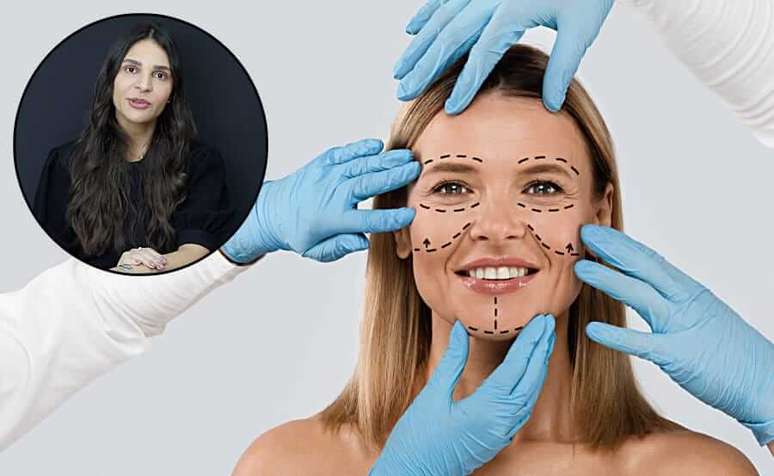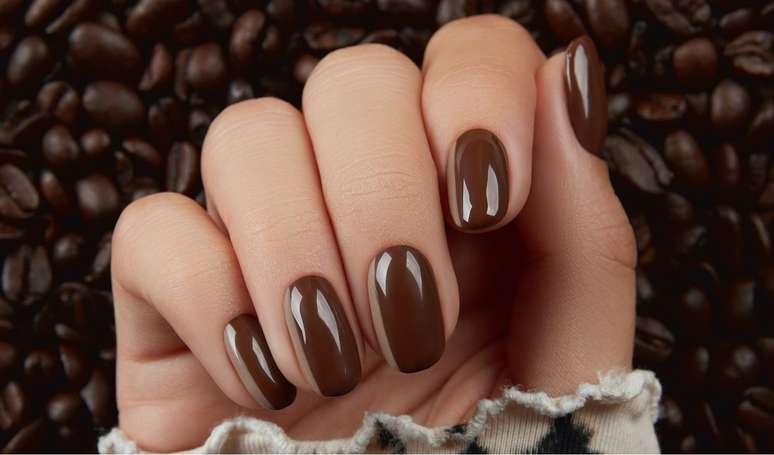Exaggeration has produced artificial results and people want to reverse the process. Now is the time to empty
-
ASSISTANCE

Why do so many people want to cancel facial fillers?
-
ASSISTANCE

Find out which foods help your digestion
-
ASSISTANCE

Aphrodisiacs: 6 foods that improve libido
Chances are high that you know someone who has ventured into using hyaluronic acid facial fillers. In recent years, this procedure, used for decades to treat HIV/AIDS-related facial lipoatrophy and to restore volume in the aging process, has become a wild card in aesthetics, offered to everyone and everything.
“A legion of people of indefinite age has been created, without identity, very different from what they were, without expression, with little human faces, but without any wrinkles. In this scenario, fashions such as facial harmonization, facial demonization, pillow face (pillow face) appear, with social networks full of photos and memes before and after, many memes “, aleta Claudia Merlocosmetology specialist at the BWS Institute.
But these exaggerations come at a price, and now is the time to reap the less-than-fabulous rewards of that exaggeration: aging.
“The international media call it ‘Filler Fatigue’. This frequent, repeated and inappropriate use of these substances, over time, stretches the tissues more and more, thus creating the need for more and more fillers and, therefore, worsening the signs of aging”, explains the plastic surgeon.
After the “botox binge”, which when misadministered can lead to a “frozen” or fake appearance, do we fall into the filler binge? Precisely for this reason the rush to the surgery is now for another cause: to dissolve the filler, to deflate the balloon.
It’s time to fill that empty balloon
An aging face can be compared to an empty balloon: inflated with air, it becomes all taut and shiny. But when it’s deflated it becomes more wrinkled than before, so even more air is needed to keep the balloon “wrinkle-free”. Overfilling is undeniably a product of our times.
In America, the use of hyaluronic acid has been going on for almost 20 years and continues to grow. According to a report by Global Market Insights (GMI), the market size of dermal fillers is USD 5.5 billion in 2022 worldwide. It is expected to grow by 10.5% annually, reaching US$14.4 billion in 2032, according to GMI projections.
Cláudia Merlo clarifies, however, that she is not against the use of this filler, which she considers a valuable tool if properly indicated.
“We have been able to restore deep structures such as bones, replace lost fat compartments, improve the proportion of facial structures and even improve skin quality. The problem is in the diagnosis and in the indication of when, how and if there is a need to compile it”, says the doctor.
The rush to empty the substances injected into the face occurs progressively. In Brazil, some celebrities, models, singers and influencers have already opted for the reversal of fillers.
“Hyaluronidase is an injectable enzyme, a copy of a protein found in the body, used to dissolve hyaluronic acid fillers. In addition to moderating an undesirable effect (such as very generous cheeks) or correcting an error (migrating, irregular or “bad” filling), the enzyme is essential to manage the rare filling emergency that is a vascular occlusion,” explains Cláudia.
Filling reversal requests are increasing
Despite the continuing popularity of injectables, filler reversals are on the rise, something of a kickback to the era of exuberance in injectable use. There is, now, a fear lingering in the air: patients want to escape aesthetic distortions and the long-term aging effect.
“We use hyaluronidase to dissolve too full, pasty and distorted faces. Overfilling not only creates a weird aesthetic, it can also lead to lymphatic channel blockage and fluid buildup, limited muscle function (which can cause strained expressions), and permanent stretching of soft tissue over time. But we also dissolve it to correct small imperfections, such as tear ducts left swollen by a badly placed gel,” says Cláudia Merlo. “People have to do procedures responsibly, as they can’t think it’s just about doing and undoing.”
Lack of aesthetic judgment
The biases are attributed to the “lack of aesthetic judgment” among some injectors, medical and non-medical, but also to a dysmorphic drive by some patients to experience the instant gratification that comes from looking and feeling fantastic after an injection. If this feeling isn’t controlled by your doctor, it can quickly go in the wrong direction.
“The patient searches for an office based on what he sees in the mirror. For example, the famous Chinese mustache, which is the nasolabial fold. The cause of this deeper sulcus may be a decrease in the fat compartment of the cheekbone due to age or weight loss. Simply filling that crease can give the impression of a heavier face, but replacing that fat properly stretches the ligaments and repositions all the structures, really producing a ‘lifting’ effect. Or, if the fat compartments are adequate, the cause could be ligament failure. In that case, it would be wrong to compile anything. The most appropriate treatment may be through the use of technology, such as microfocused ultrasound, or even facial surgery,” she explains.
html[data-range=”xlarge”] figure image img.img-044e8a1f47a099bee58aadb8a1112f7cgc8fi9jp { width: 774px; height: 639px; }HTML[data-range=”large”] figure image img.img-044e8a1f47a099bee58aadb8a1112f7cgc8fi9jp { width: 548px; height: 452px; }HTML[data-range=”small”] figure image img.img-044e8a1f47a099bee58aadb8a1112f7cgc8fi9jp, html[data-range=”medium”] figure image img.img-044e8a1f47a099bee58aadb8a1112f7cgc8fi9jp { width: 564px; height: 466px; }HTML[data-range=”small”] .article__image-embed, html[data-range=”medium”] .article__image-embed { width: 564px; margin: auto 0 30px; }

Fillers should be used to restore lost volume, not for weight lifting or to camouflage the signs of gravitational aging. Attempting to “lift” sagging tissue with hyaluronic acid can’t be done without inflating the face with a cartoon effect. Another maneuver that can go wrong is “trying to reshape the face,” she adds, imposing unnatural contours.
“How many times have I seen patients who wanted to operate bags under the eyes and improve dark circles and treated them with fillers in the cheekbone region, without the need for surgery. Or even patients who came to put filler in their dark circles and I indicated an eyelid surgery, removing the bags. I often receive beautiful patients who have been undergoing aesthetic treatments and fillers with dermatologist colleagues for years, who, seeing that it is no longer possible to cure sagging skin, consciously recommend facial surgery. Conversely, many patients turn to me for facial surgery and I recommend aesthetic treatments, delaying the more invasive procedures for a few years. Or even, during the facial operation, I use hyaluronic acid fillers or fat as a complement,” says the doctor.
But the problem is that not only are patients potentially receiving more filler than they need at each appointment, they’re also rescheduling prematurely, based on “a mistaken belief that the filler wears off in six months and should be re-injected at that time. ” .
The widely held myth that hyaluronic acid disappears on a predictable schedule comes from clinical trials, whose fixed endpoints (6, 12, or 24 months) have been misinterpreted as concrete life expectancy of the filler. Many doctors today reiterate that these tests were only demonstrating that the clinical effect of filling an inexperienced user was not as evident in the photos after X months.
While the longevity of the filler varies by product and patient, recent MRI studies have shown that it lasts much longer than advertised.
“Hyaluronic acid is actually reabsorbed by the body, as it is a substance that we produce naturally. But when we talk about the need to keep the procedure after one or two years, we are referring to the duration of the aesthetic result and not to the presence of the substance in the body. Hyaluronic acid can really take much longer than two years to be completely absorbed by the body,” informs the doctor.
How long does it take to be absorbed?
And how long exactly does it take for hyaluronic acid to be absorbed? According to the dermatologist, it is not known for sure. “More and more studies are being conducted to determine how long hyaluronic acid fillers stay in the skin. But it’s difficult to give a definitive answer, because not all hyaluronic acid fillers are created equal,” says the doctor.
“To be used as a filler, hyaluronic acid undergoes a cross-linking process, also known as cross-linking, which forms bonds between hyaluronic acid molecules to make it more resistant to degradation and, at the same time, more compact and dense. With this the product is able to give volume and has difficulty in being absorbed by the body. Hyaluronic acids from different manufacturers have different degrees of cross-linking and, accordingly, are absorbed by the body at different rates, ”he says.
While concerns about filler fatigue don’t appear to be reducing overall demand for these products on a large, statistics-altering scale, doctors say they’re starting to see patients withdraw in a number of ways.

Cláudia Merlo usually explains to the patient that the procedures are always individual. Therefore, when the problem is dermal flaccidity, the doctor recommends the use of Radiesse, an injectable biostimulator, indicated to improve skin quality by reducing skin flaccidity.
“The substance is applied to promote controlled inflammation, in order to stimulate collagen-forming cells (fibroblasts) to produce collagen, about 18 months,” says the doctor. With the stimulation of collagen, the skin becomes more elastic and firmer. “The technique can be combined with microfocused ultrasound, which helps promote skin tightening, i.e. that ‘tightening’ of the skin with the muscle, when it becomes firm”, adds the middle finger.
Therefore, the best advice is to choose the practitioner well, checking for issues such as: certification, anatomical knowledge, experience, obsession with safety and willingness to say “no”. So adopt a less is more mindset. “Instagram photo doubt: There are a lot of filters out there! –, magical treatments and miraculous novelties: cheap can be expensive”, concludes Cláudia.
HOMEWORK inspires transformation in the world of work, in business, in society. Created by Compasso, a content and connection agency.
Source: Terra
Ben Stock is a lifestyle journalist and author at Gossipify. He writes about topics such as health, wellness, travel, food and home decor. He provides practical advice and inspiration to improve well-being, keeps readers up to date with latest lifestyle news and trends, known for his engaging writing style, in-depth analysis and unique perspectives.






![Everything starts here: What awaits you on Thursday, July 17, 2025 in the episode of 1221 [SPOILERS] Everything starts here: What awaits you on Thursday, July 17, 2025 in the episode of 1221 [SPOILERS]](https://fr.web.img3.acsta.net/img/d2/ea/d2ea04414756eebab5b843dd8b3686f5.jpg)


